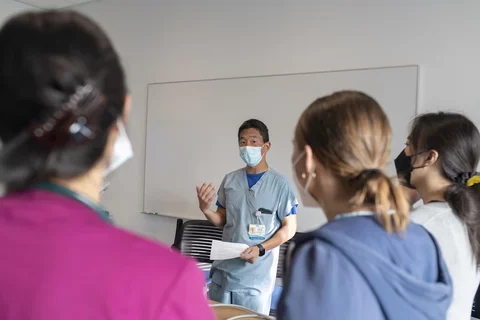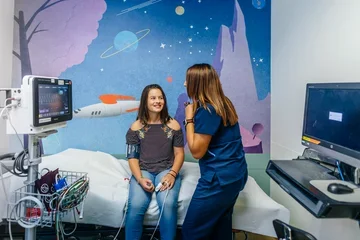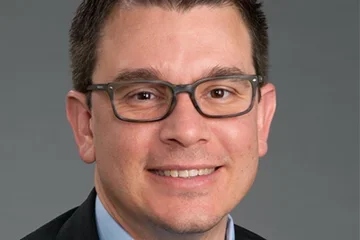Preparing for Your First Clinical Rotations in Medical School
5 Things to Know

A Day in the Life of a Third Year Medical Student
Students learn how the body works during the first two years of medical school. David Geffen School of Medicine at UCLA (DGSOM) graduate Gil Weintraub says “the rubber meets the road" in the third year of medical school, when students complete clinical rotations. While working with physicians at various UCLA-affiliated hospitals, students get real-world experience in surgery, internal medicine, pediatrics, psychiatry, and other core specialties.
Dr. Weintraub vividly remembers his first clinical rotation. "I was terrified," he admits. "After the first two years, you know a lot about physiology, but not how to handle orders or carry out treatment plans. I spent my first few days shadowing people and asking questions."
Jitters aside, studying pays off during clinical rotations. "It validates the long hours and hard work when you're actually helping someone," he says. "Maybe you help a patient have a better experience, assist with a diagnosis or prevent a complication. Knowing you're making a difference is extremely rewarding."
Dr. Weintraub offers five pieces of wisdom for medical students beginning that first clinical rotation:
1. Be Prepared
DGSOM helps medical students prepare for clinical rotations with a two-week Clinical Foundations course at the beginning of the year and a short "bootcamp" before each rotation. Dr. Weintraub recommends students solicit intel from their peers as well. Before starting a new rotation or moving to a new hospital, he emailed fellow students for advice about workflows and logistics. "I asked where they parked, what traffic patterns were like, what types of teams they worked with, the expectations in terms of hours and anything else that would make me comfortable in a new environment," he explains.
2. Keep Studying
After a long day of work, Dr. Weintraub went home and hit the books, reading more about what he saw in the wards. "The most vivid memories and connections I have with particular diseases, tests and syndromes are from patients I've seen," he explains. "When you come across something new, look it up while that experience is still fresh. The next time you see a patient with the same condition, it's easier to remember and apply what you learned from that first patient."
3. Get Comfortable Being Uncomfortable
During each rotation, students work at multiple hospitals — each with its own patient demographics, medical-records systems, workflows and testing procedures.
"As soon as you feel comfortable at Cedars-Sinai, you move to Olive View," says Dr. Weintraub. "Once you feel useful in orthopaedic surgery, you're on to pediatrics. You're never at the top of your game, and that's the point — to expose you to many different things. You'll often feel overwhelmed; just remember everybody [at DGSOM] wants you to succeed. It's a time-honored part of becoming a doctor."
4. Ask Questions
Physicians often quiz medical students on pertinent research or medical knowledge. Dr. Weintraub says it's okay to pass on some questions and instead ask intelligent follow-up questions to learn from the experience.
"During physical exams, doctors often ask, 'Can you see this?' or 'Can you feel that?' Sometimes you can't," he assures. "Just say, 'No, but will you show me, and why is it this way?'"
5. Take Care of Yourself
Looking back, Dr. Weintraub wishes he had spent his free time on friends, family, and even himself.
"I don't regret the long hours or hard work. But I wish I had spent more time with friends and family. I wish I had eaten better and gone to the gym more often. It's a long road, but you have to take care of yourself."



